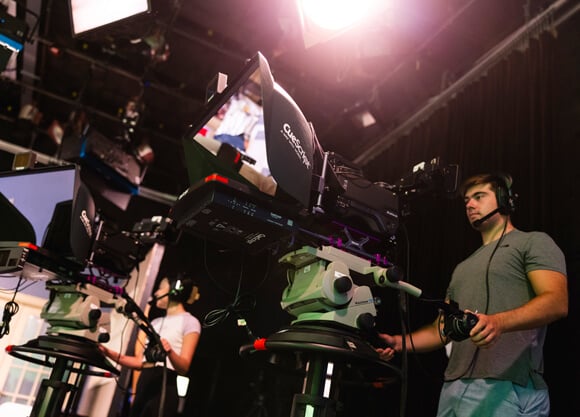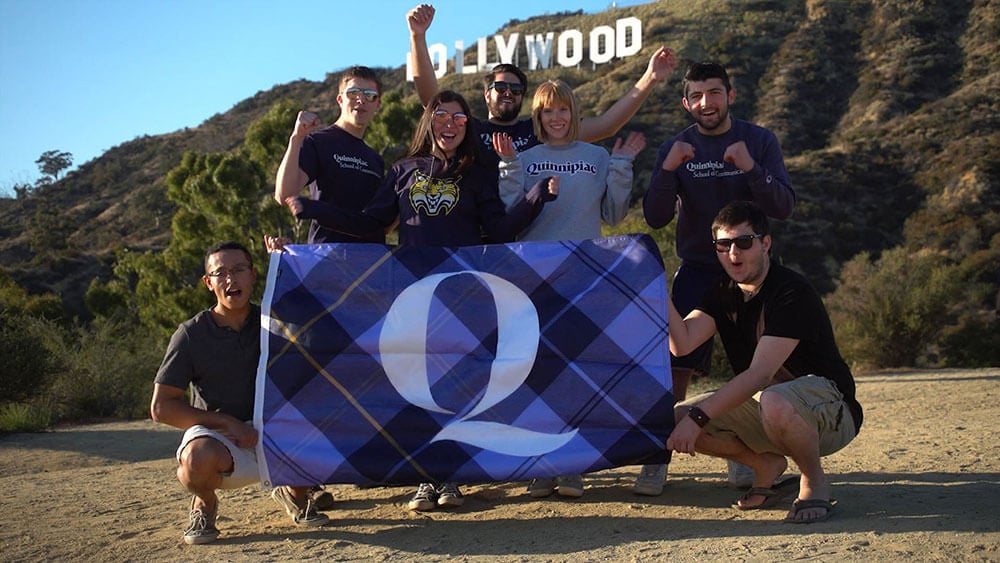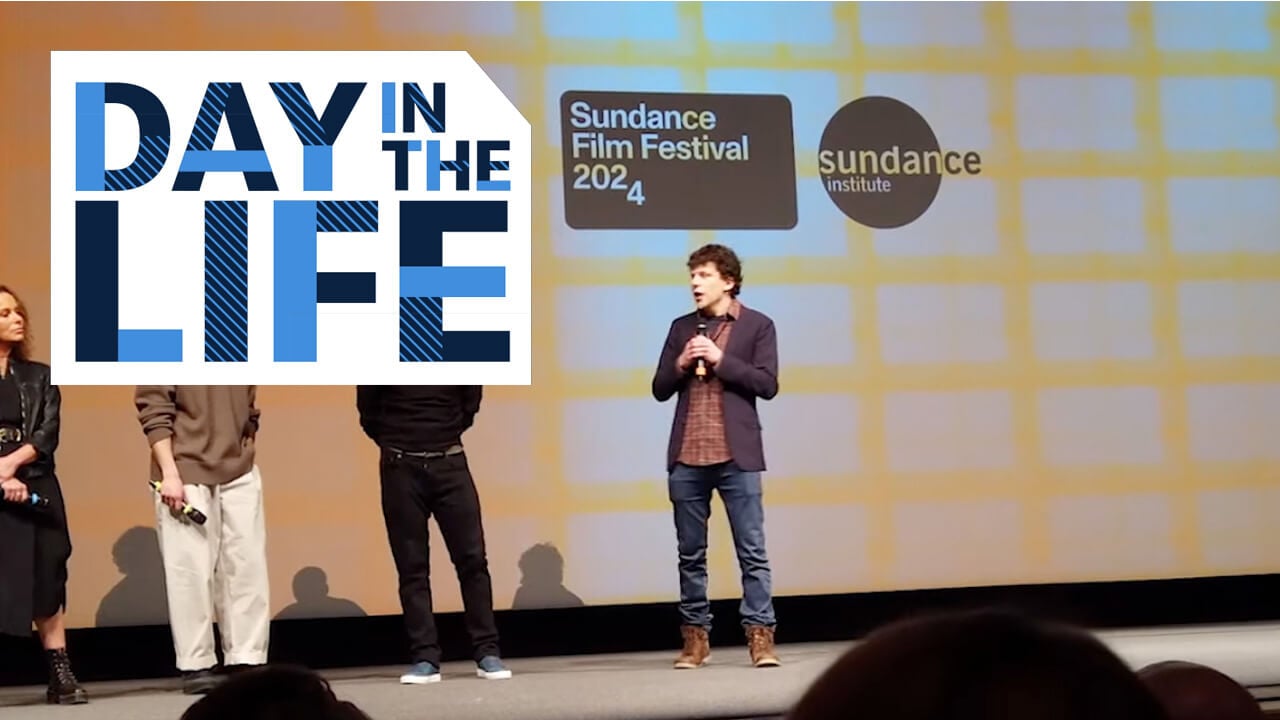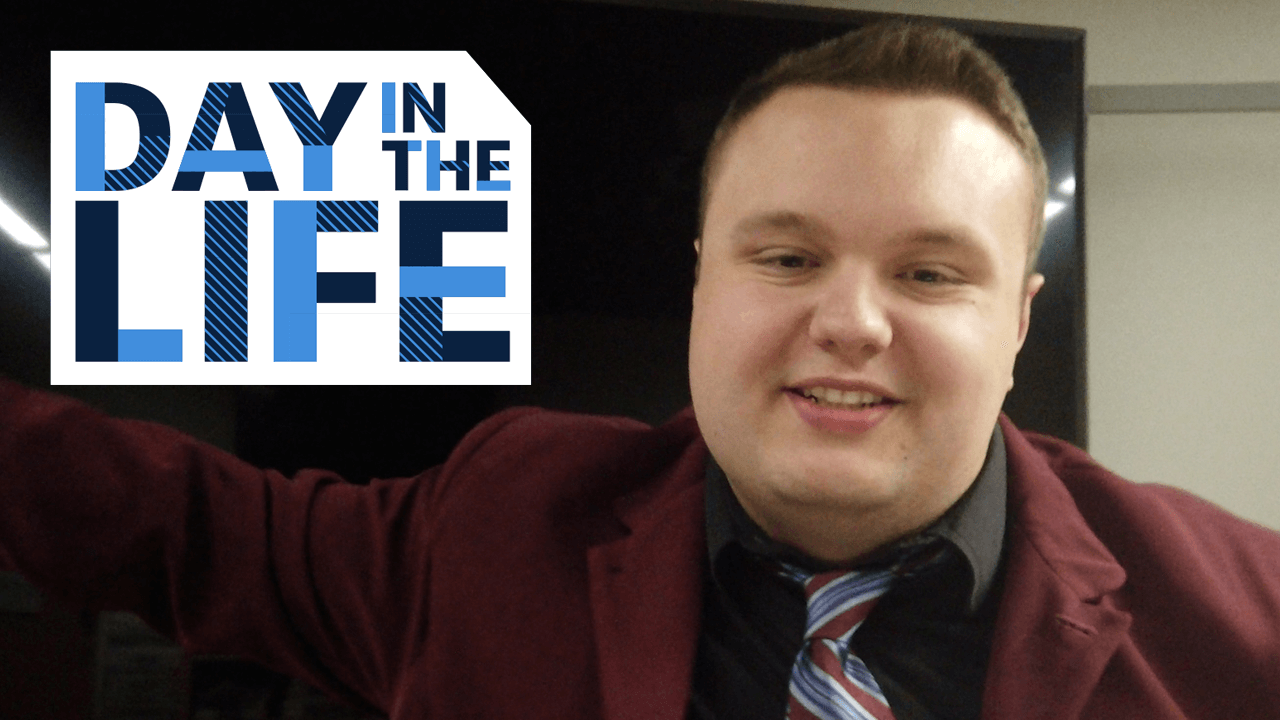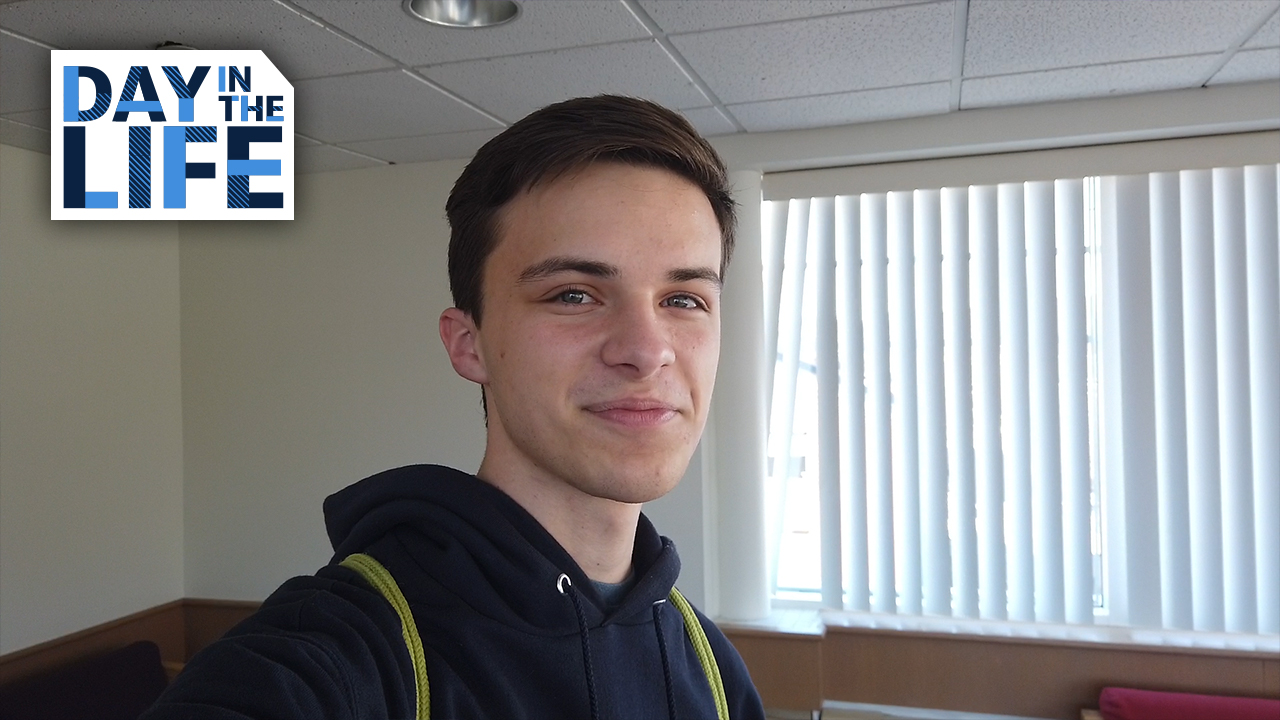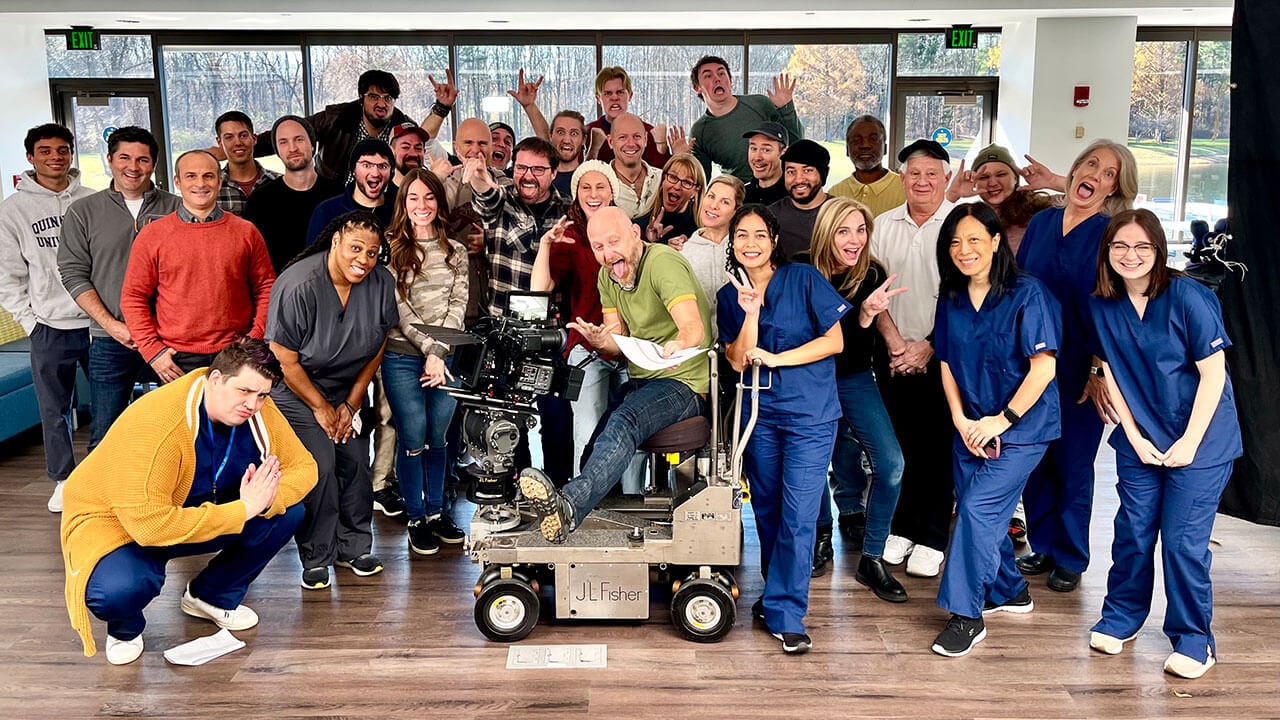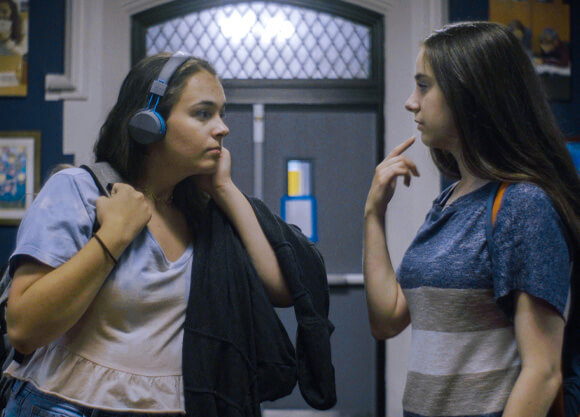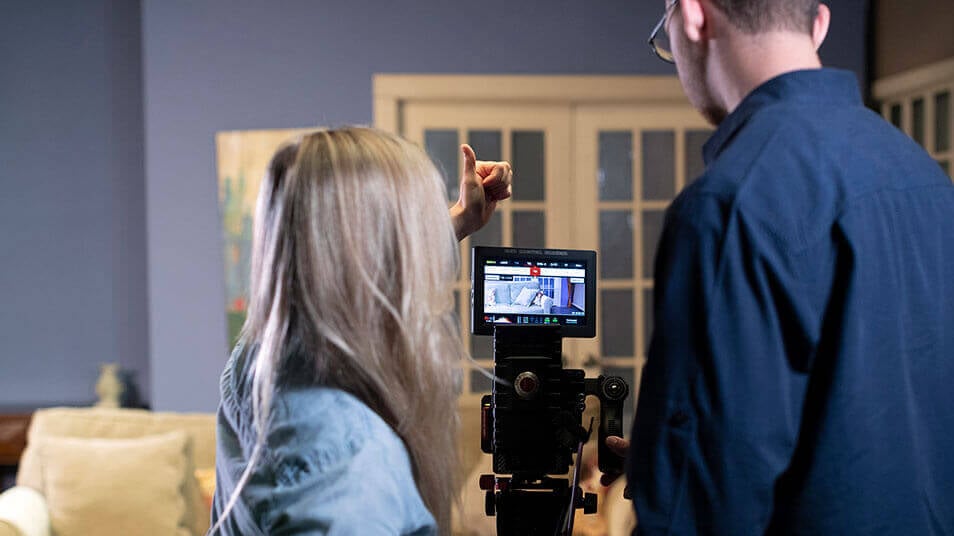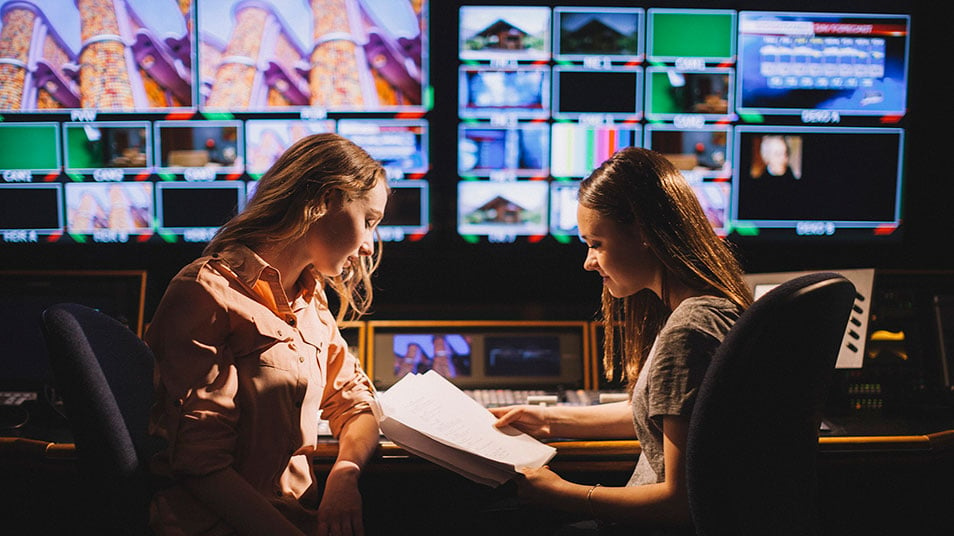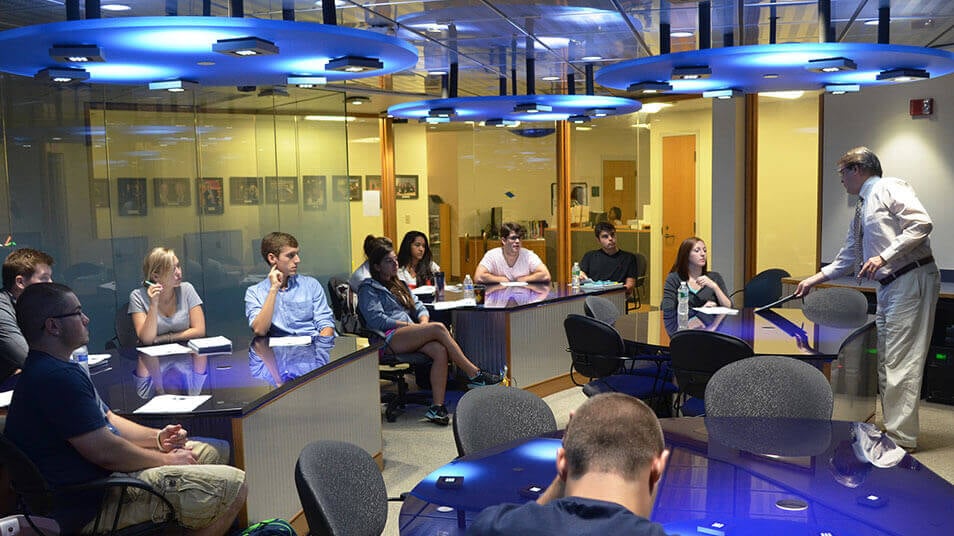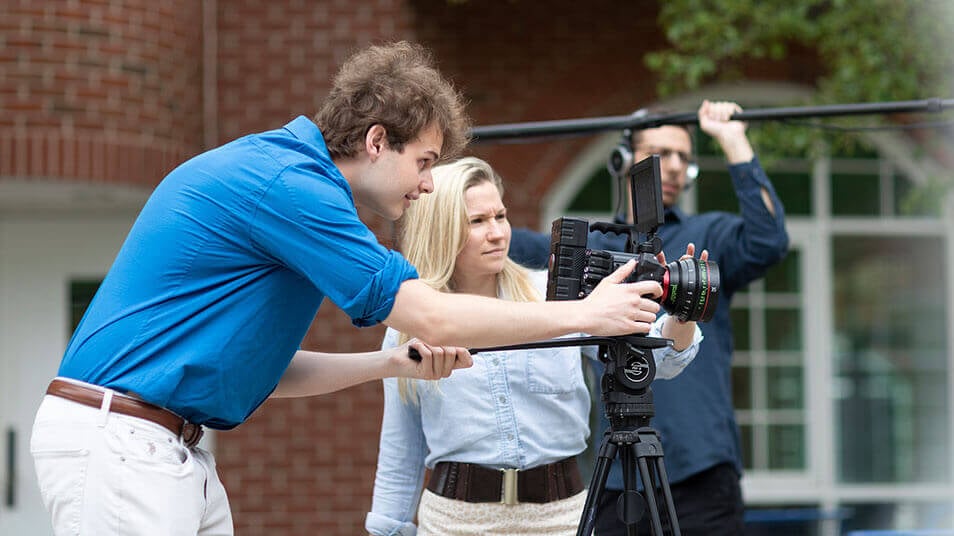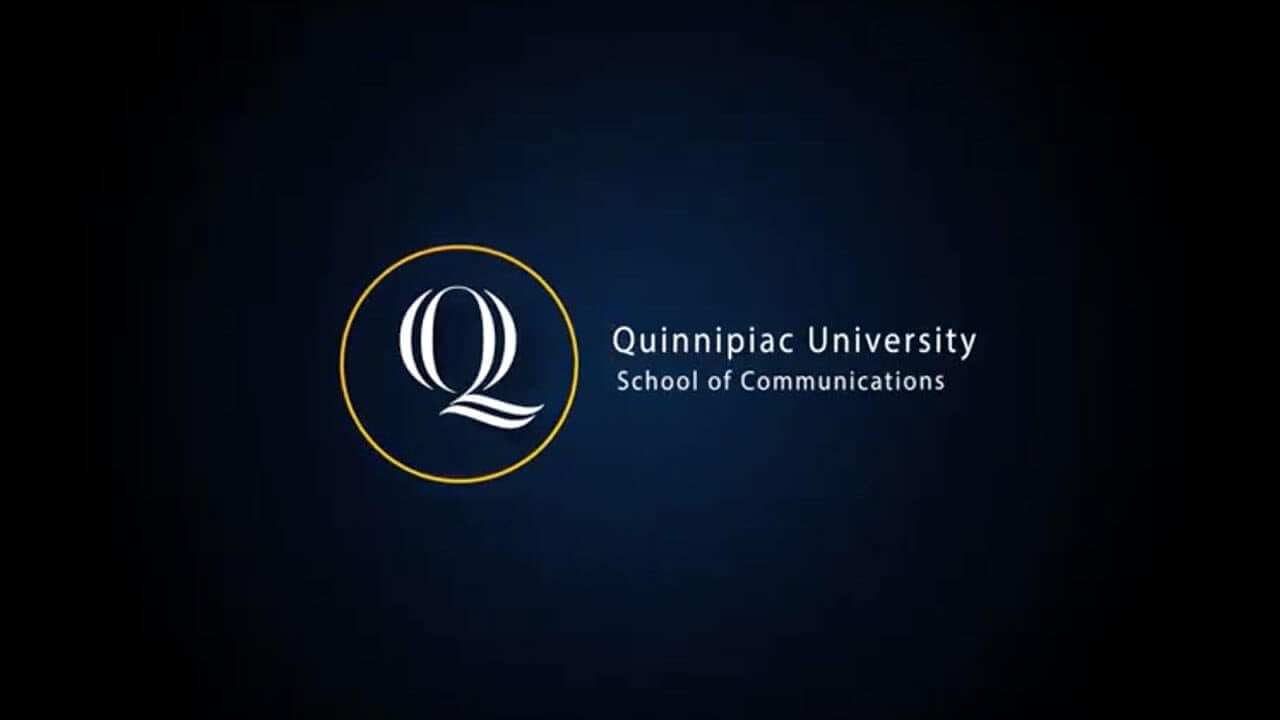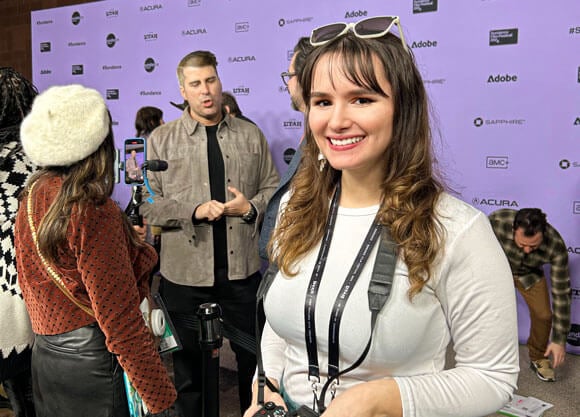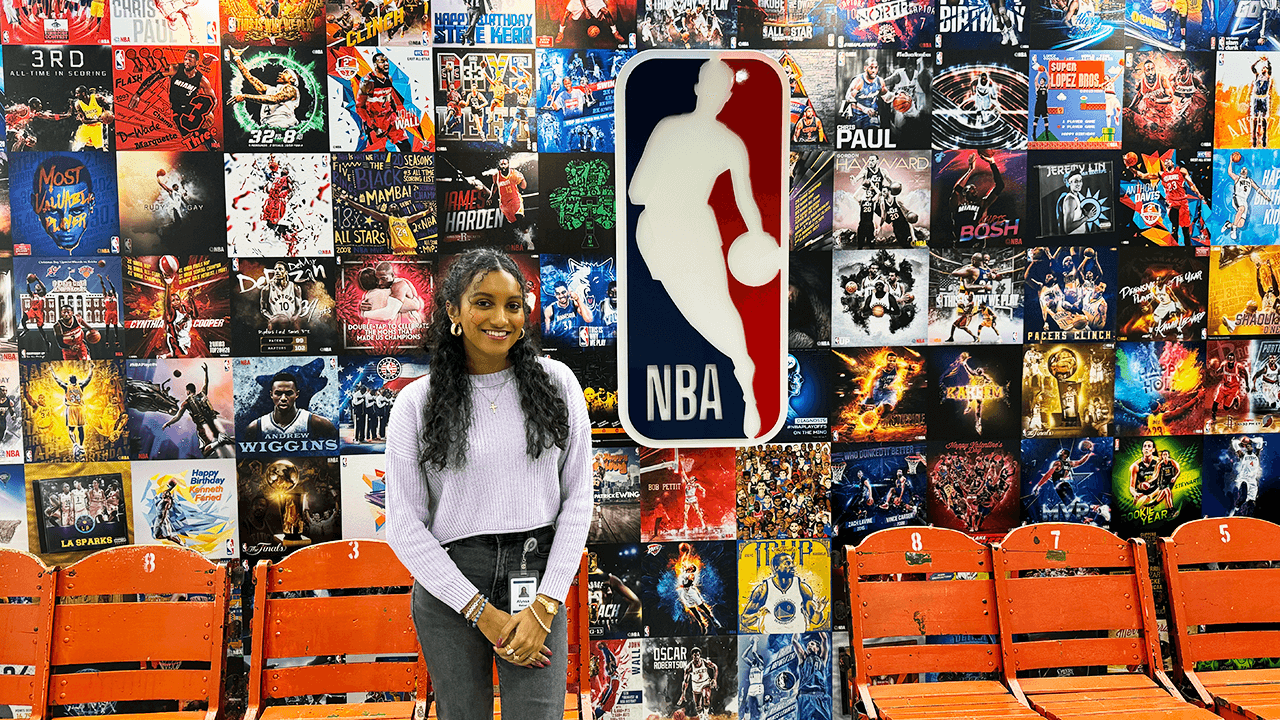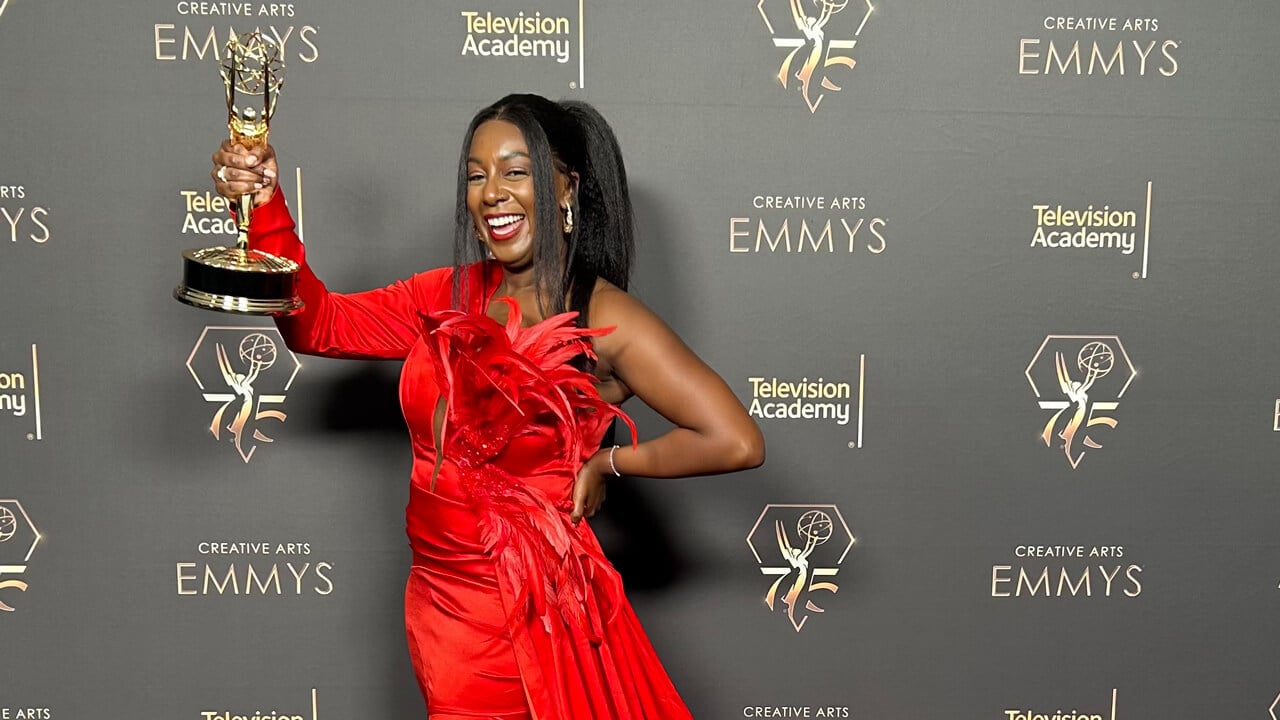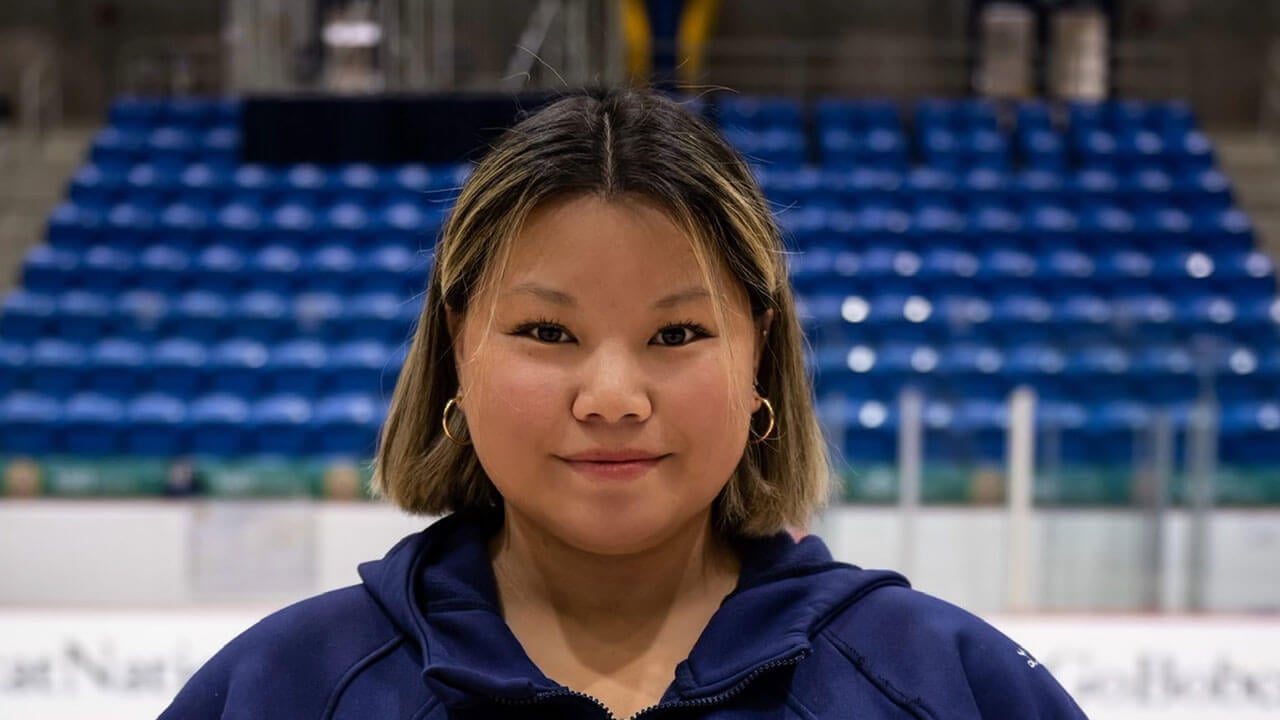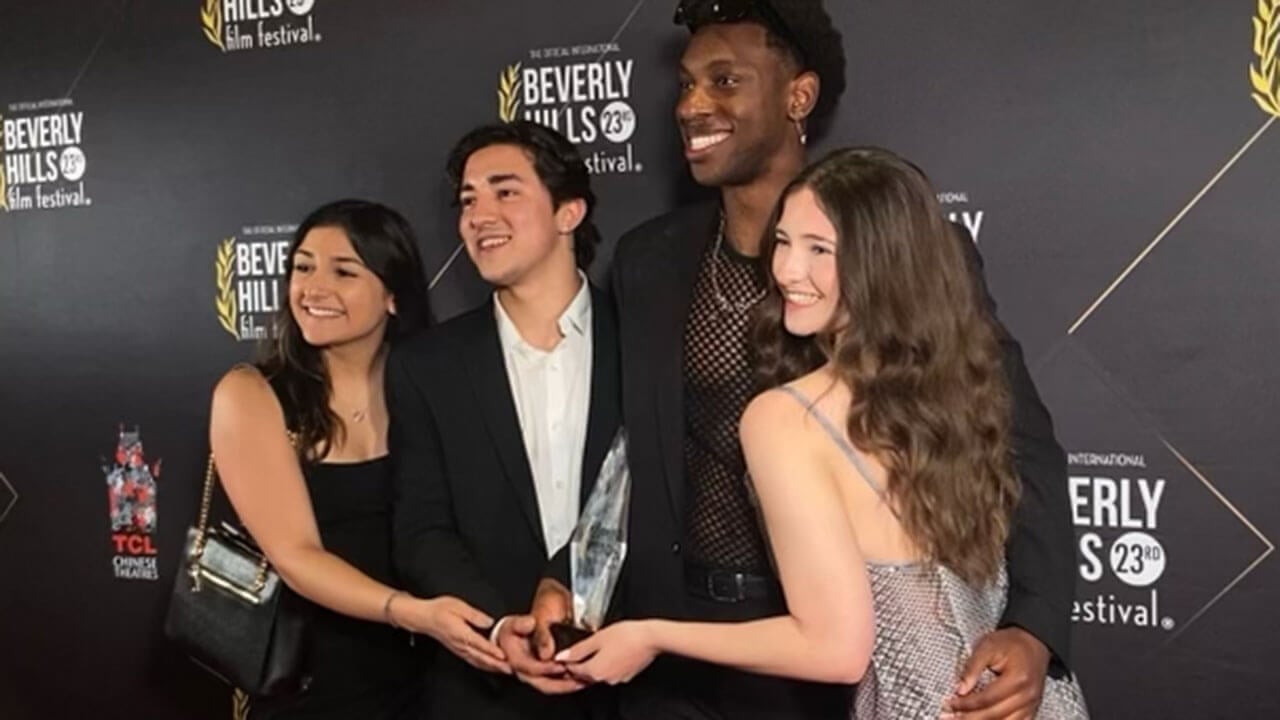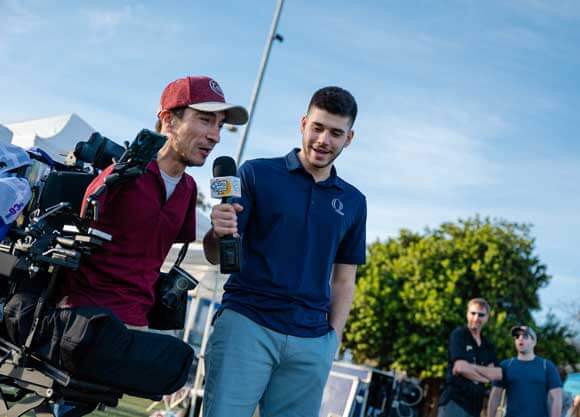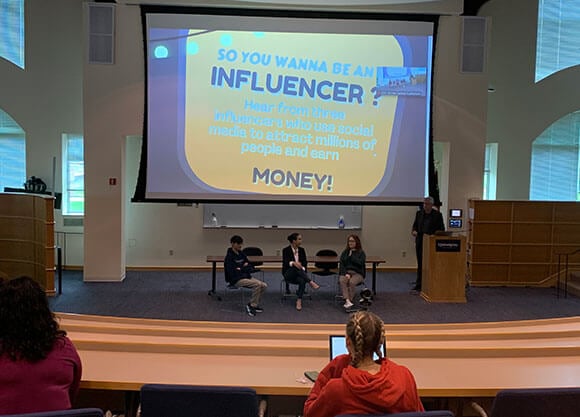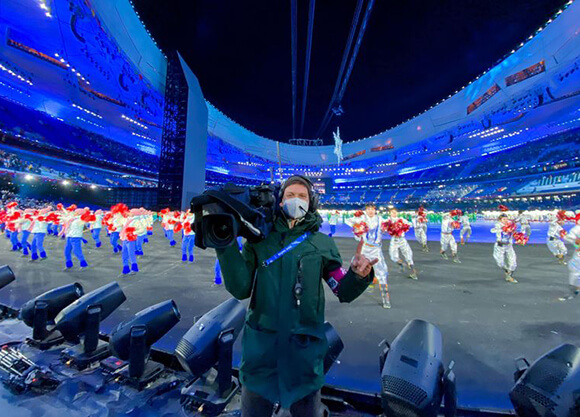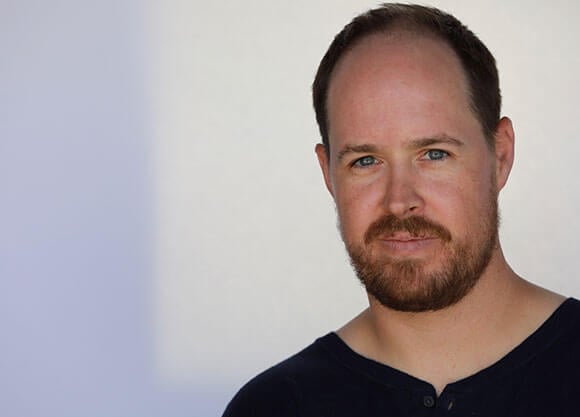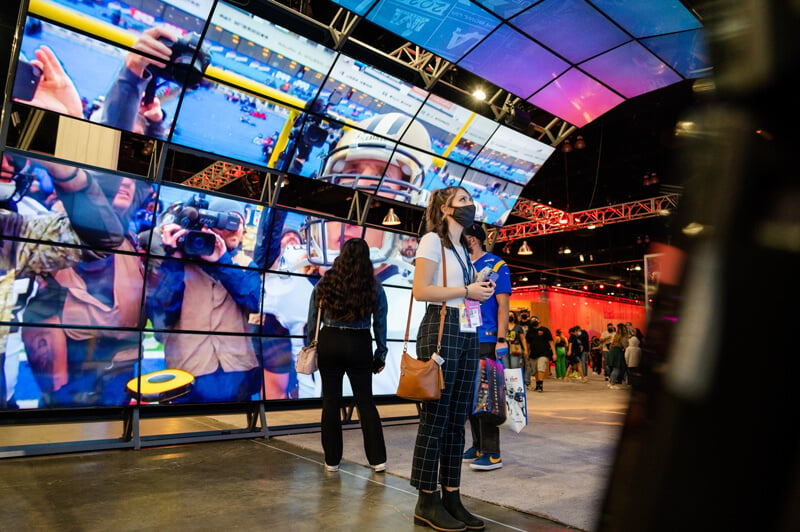In the Film, Television and Media Arts (BA and BFA) programs, students combine storytelling skills with the ability to create compelling digital content for both large and small screens. From day one, students will learn how to project a creative vision to a wide range of audiences.
The first-year curriculum introduces students to basic concepts of production including cinematography, editing, and sound acquisition. Students will explore the fundamentals of screenwriting alongside introductory coursework in film history and theory.
In their second and third years, students branch out into a concentration of electives that delve into the technical points of filmmaking. Courses such as advanced visual effects, advanced post-production techniques and advanced sound productions supplement upper-level courses in film and television theory.
The program culminates in an intensive senior capstone production. Our advanced students work in teams of six to ten members to produce and deliver industry-ready short films with budgets averaging between $15,000 and $20,000 per film. The students participate in a gala screening event at our 250-seat facility after which they submit their films to national and international film festivals.


